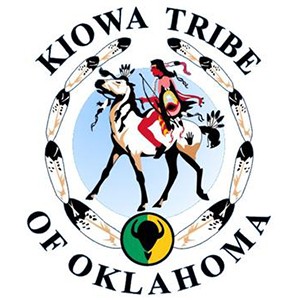Kiowa Tribe
By Brody Feldmann

At one time the Kiowa were known as mountain people, as they migrated south through mountain ranges until they were forced to settle in Oklahoma and Texas by the U.S. government.
The Kiowa was one of the final nomadic tribes before the U.S. government between 1865-1867 forced them south out of the Rocky Mountains and into the Southern Plains.
Kiowa roots track back to the Columbia River in Canada as early as 1700 before the tribe first made a trek south to the Upper Yellowstone and the Missouri River. From the Missouri River they moved into the Black Hills and then into Montana.
That is where the Kiowa came in contact with the Sioux. The Kiowa had previously traveled south in search of deer, buffalo and elk. But this time they had to move on because they were pushed out by Sioux warriors.
The Kiowa used every part of the animals they hunted, for food, clothing, shoes and protection.
“They had a use for everything. Nothing was ever wasted,” said tribal member Steve Quoetone.
When the Sioux pushed the Kiowa south into the Rocky Mountains of Colorado, the Kiowa acquired horses, which changed the tribe’s lifestyle. Horses were used for traveling, hunting and fighting their enemies.
About 1790, after a long period of war, the Kiowa made peace with the Comanche. The two tribes ruled most of the land between the Arkansas and Red rivers, according to historical documents provided by Quoetone.
Once settled with the Comanche, Kiowa tribal members began looking for more land. These excursions are known to have gone as far north as to see the “white bear” (polar bear) and as far south as to see the “man in trees” (monkey), which were known to have four hands and a tail.
The Kiowa continued settling in the Southern Plains with the Comanche until the U.S. government started forcing them into Oklahoma starting in 1865.
The Kiowa were known as a family-oriented people who believed in equity. If one man had more, he would give it to people who had less. Wealth was based on horses, wives and children.
According to Quoetone, men hunted and went to war while the women cooked, made clothing, took care of the children, built and tore down the teepees and took care of the elders. He said the women did 80 to 90 percent of the work.
“I say that with confidence. They were what made the Kiowa. It’s easier to say what the men did because they hunted and fought. The women, they did everything else,” Quoetone said.
According to Quoetone, the U.S. government forced the Kiowa to stay in Oklahoma by killing thousands of their horses during the Battle of Palo Duro Canyon, a key component to the Kiowa lifestyle.
In the Kiowa tribal symbol, a warrior is depicted on horseback over a buffalo skull, which represents the Ghost Dance the government outlawed because they believed the Kiowa could revive the dead.
The Oklahoma Historical Society has acquired an artifact related to the Kiowa history in Oklahoma. The society obtained a bison hide that was hand-painted by Woodrow Wilson “Woody” Big Bow and his father during the 1930s, according to an OHS newsletter. “Woody” Big Bow was the grandson of Kiowa Chief Big Bow. The painting tells the story of the Big Bow family from the 1860s through the 1930s.
The Kiowa Tribe today numbers about 11,000 and is based in southwest Oklahoma with its headquarters and museum in Carnegie.
Brody Feldmann is a reporter with Gaylord News, a reporting project of the University of Oklahoma Gaylord College of Journalism and Mass Communication.




